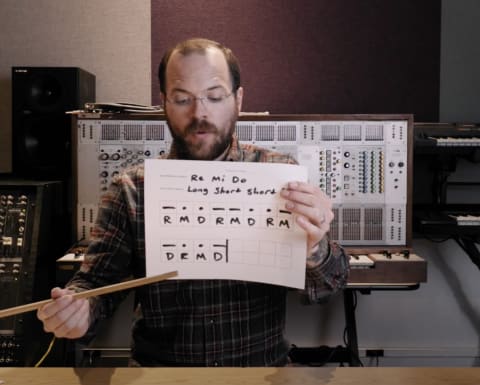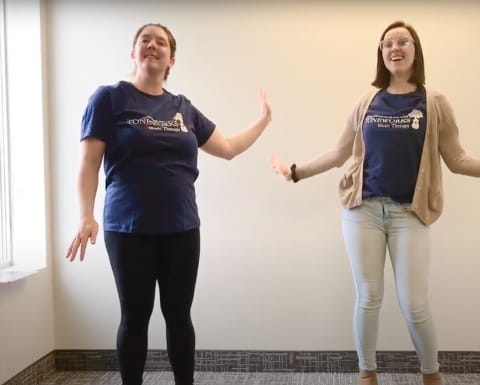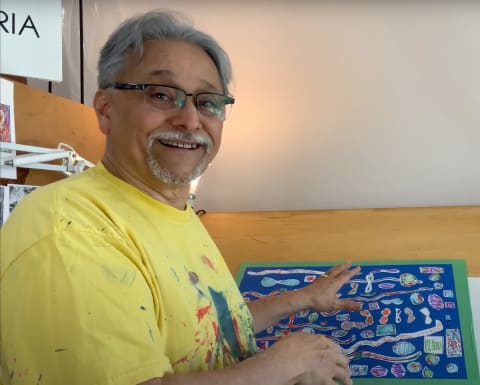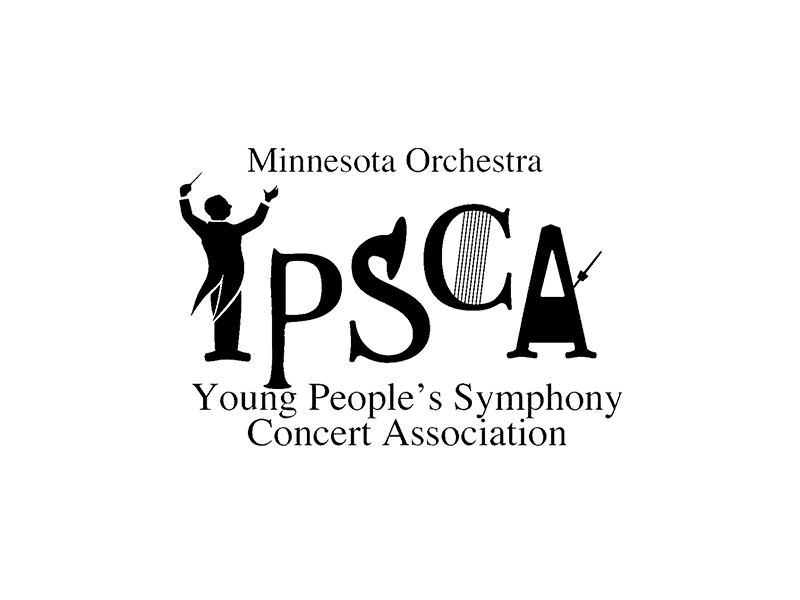
Inside the Composer's Mind
Join us for a journey Inside the Composer's Mind! This collection of videos for students in grades 3-6 explores elements of music through interactive activities and Minnesota Orchestra performances.
Some videos ask you to do an activity alongside the musician; some might require supplies. Preview the videos in advance to make sure your students have everything they need to get started. Don't forget to check out the rest of the supplemental materials—instrument demonstrations and activities from community partners—to deepen your experience and inspire students to express themselves through music and other art forms!
About the Composers
Nebojša Jovan Živković
Nebojša Jovan Živković leads a dual career as a composer and a performer of marimba and percussion music. He has traveled the world to teach and perform, including here in Minnesota, and released six CDs of his original music for marimba and percussion. Živković’s prolific compositional output has made him one of the world’s most frequently performed composers of percussion music, with many of his works becoming standards in the modern percussion repertoire; his pedagogical works for younger players have also found great success.
In the first movement of his Trio per Uno, Meccanico, three percussionists play dizzying interlocking patterns on bass drums—sometimes in unison and sometimes staggered—as well as three sets of bongo drums and six Chinese gongs. Živković’s score directs the percussionists to form an inward-facing triangle around a shared bass drum; however, this performance uses three separate bass drums to allow for safe physical distancing between players.
Živković shares the following remarks on the first movement of Trio per Uno, excerpted from a longer program note about the full piece:
“The [first and third] movements have some similarities in manner and appear as if they would present a perfection of wildness in an archaic ritual cult. The opening [movement] requires a bass drum (lying flat) played with timbale sticks by all three players. In addition to that sound, a pair of bongos and China gongs are used by each player. [The] possibility of improvisation...just makes the piece more interesting and, at the same time, opens the way for the free streaming of the drum-energy, without an obligation to the ‘written text.’”
Instrumentation: 3 bass drums, 3 sets of bongo drums and 6 Chinese gongs
-
BORN: July 5, 1962, Sremska Mitrovica, Serbia
Jessie Montgomery
A native of New York City, Jessie Montgomery has made a point throughout her career to take on projects that explore historically marginalized voices and encourage a wider awareness of what is happening in the world around us. “Music is my connection to the world,” she writes on her website. “It guides me to understand my place in relation to others and challenges me to make clear the things I do not understand.” Her music, in turn, takes us all on a journey.
Voodoo Dolls, for string quintet, was commissioned in 2008 by the JUMP! Dance Company of Rhode Island. Voodoo is a collection of spiritual practices stemming from traditional religious beliefs in several West African nations, primarily Benin, Togo, Ghana and Nigeria, and further developed in parts of the African diaspora in North America. Montgomery’s Voodoo Dolls is, in her words, “influenced by west African drumming patterns and lyrical chant motives, all of which feature highlights of improvisation within the ensemble.”
Those patterns are noticeable from the first notes, when players start knocking at their instruments. Soon after, they pick up their bows to articulate the driving rhythm in the same way, with the first violin indulging in some freewheeling improvisation. Eventually a lilting viola solo arrives, ultimately joined by the cello. More spirited knocking effects announce a section marked Wild! in the score. After a final burst of energy, the frenzy of the dance magically fades away.
Instrumentation: 2 violins, viola, cello and bass
-
BORN: 1981, New York City, New York
Antonín Dvořák
Born into a poor family in rural Bohemia, Antonín Dvořák had been apprenticed to a butcher, but was able to change paths when friends and relatives helped send the boy to music school. In 1878, the year he turned 37, Dvořák composed his first set of Slavonic Dances. Based on the colorful peasant dances of Eastern Europe, the Slavonic Dances explode with color and excitement, and they made Dvořák’s reputation almost overnight. They were quickly performed throughout Europe and even in distant America, and audiences around the world were swept away by their unusual rhythms and distinctive melodies. Earlier in that same year, between January 4 and January 18, 1878, Dvořák had composed his Serenade in D minor, and it too incorporates features of Czech music.
The instrumental serenade is usually remembered as an 18th-century entertainment form. Usually light in character, these multi-movement works were often composed for social occasions—weddings, graduations, civic ceremonies—and were sometimes written specifically to be performed outside. They usually began with a spirited march, and along the way they might include minuets, variations, movements for a soloist with the orchestra, and so on. No one knows the occasion for which Dvořák wrote his Serenade in D minor. In this good-spirited music, Dvořák took the general form of the 18th-century wind serenade but made some important changes, reducing the number of movements to just four and scoring it for an unusual combination of instruments.
Moderato quasi marcia. Dvořák salutes tradition by beginning with a sturdy march. After this mock-serious opening, he offers some nice variety with a second subject that rocks easily along its dotted rhythms; both themes return to lead the movement to a quiet close.
Instrumentation: 2 oboes, 2 clarinets, 2 bassoons, contrabassoon, 3 horns, cello and bass
-
BORN: September 8, 1841, Nelahozeves, Bohemia (now Czechia)
-
DIED: May 1, 1904, Prague, Czechia
Ulysses Kay
Ulysses Kay was among the first major African American classical composers to follow in the footsteps of trailblazers from the preceding generation such as William Grant Still and Florence Price. (Still, in fact, helped prod the young Kay in the mid-1930s to redirect his academic studies from liberal arts to music.) Like many Western classical composers who came of age in the 20th century, Kay had available to him a dizzying array of traditional and modern compositional styles and techniques. While studying with Paul Hindemith in the early 1940s, Kay found his primary voice in the Neoclassical style—the revival of 18th-century European musical practices such as light textures, simplicity of style, harmonies rooted in traditional Western tonality (though with expanded use of dissonance), and the favoring of traditional non-programmatic forms such as dance suites and sonatas.
By the time of Kay’s passing in 1995, his output included five operas, the last of which was about Frederick Douglass, as well as more than 20 large orchestral works and numerous choral, chamber and film compositions. Also vital to his life story were service in the U.S. Navy as a musician during World War II, 15 years as an advisor and consultant for the performing right organization Broadcast Media, Inc., and two decades as a distinguished music professor at the City University of New York.
In the Six Dances for String Orchestra, the use of the dance suite form, which was of great importance in the Baroque period (1600-1750), fit Kay’s Neoclassical style, though here infused with an energetic and distinctly American spirit. The Galop is a fast-paced movement in 2/4 in Rondo form, employing repeated sections in the manner of a Baroque suite, with an emphasis on clear melodic lines, while the tempo and time signature each stay constant.
Instrumentation: string orchestra
-
BORN: January 7, 1917, Tucson, Arizona
-
DIED: May 20, 1995, Englewood, New Jersey
Franz Joseph Haydn
Franz Joseph Haydn was one of the most famous composers in Europe during his time. He is known as the "Father of the Symphony," and helped standardize musical forms like the string quartet. Haydn was born in Rohrau, a small town in Austria. At the age of 8 he went to Vienna to sing in the choir at St. Stephen's Cathedral and to attend the choir school. After leaving St. Stephen’s, Haydn struggled to earn a living as a composer until he was hired by the Esterházy family—a Hungarian noble family—as their Kapellmeister. It was Haydn's job to write music for the Esterházy princes, and to conduct their orchestra. Haydn composed symphonies, operas, string quartets, and all kinds of other music for performance at the Esterházy court.
Around 1790, Haydn accepted a commission for six symphonies by Johann Peter Salomon of London. Haydn was treated like royalty upon his arrival in England. Later, Haydn composed another set of six for a second visit to England in 1794. These 12 symphonies are known as the “London Symphonies.” Symphony No. 104 is not only the last of this set, it is Hyadn’s final symphony. The last movement of this symphony uses Slavonic folk tunes which Haydn heard during his years on the Esterházy estates and is in Sonata form—with an exposition presenting two themes, a development section where these themes are manipulated, a recapitulation of the opening themes, and a final coda to close out the piece.
Instrumentation: 2 flutes, 2 oboes, 2 clarinets, 2 bassoons, 2 horns, 2 trumpets, timpani, strings
Guide to the Orchestra
See instruments in action, as demonstrated by Minnesota Orchestra musicians.

Composition Activity
Learn about isorhythm with composer Adam Zahller, and then create your own music using this technique.

Movement Activity
See how different instruments make you want to move with this activity from Toneworks Music Therapy Services.

Art Activity
Explore parallels between music and visual art compositions with a drawing activity from artist Jimmy Longoria.
Sponsored By
Thomas* and Mary Lou Detwiler
Mary Ann Feldman Music Education Fund
Corporate Sponsors





